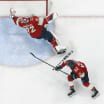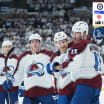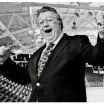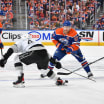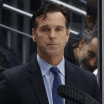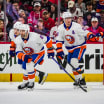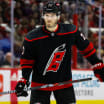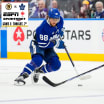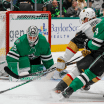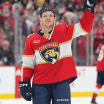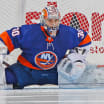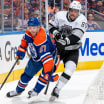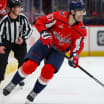The NHL gave a detailed description of what life in the hub cities under the Return to Play Plan will be like to players, coaches and team executives in an hourlong virtual presentation Thursday. It covered everything from health and safety to daily living, game presentation and competitive fairness.
NHL hub cities of Edmonton, Toronto ready for Stanley Cup Qualifiers
Protocols, daily living, game presentation under Return to Play Plan explained to players
Life in the Secure Zone
"This is going to be an unusual, to say the least, endeavor," NHL Commissioner Gary Bettman said. "It will be challenging at times, but I assure you we, in conjunction with the [NHL] Players' Association, who we work with every step of the way, are trying to do everything possible to make this an experience that hopefully you'll never forget, but in a good way."
The League already has staff members working the two hub cities, Toronto for the Eastern Conference and Edmonton for the Western Conference, to prepare for the arrival of 12 teams in each city Sunday.
There will be 12 exhibition games -- six in each city -- from Tuesday through Thursday, and play will officially resume with the Stanley Cup Qualifiers on Aug. 1, when there will be three games at Scotiabank Arena in Toronto and two at Rogers Place in Edmonton. The Qualifiers will consist of two round-robins -- one for the top four teams in the East, another with the top four teams in the West -- to determine seeding for the Stanley Cup Playoffs, and eight best-of-5 series with the winners advancing to the playoffs. The first two rounds of the playoffs will take place in the hub cities, and Edmonton will host each conference final and the Stanley Cup Final, which is tentatively scheduled to begin Sept. 22 and will end no later than Oct. 4.
The NHL season was paused March 12 due to concerns surrounding the coronavirus.
"From what we do on Aug. 1 all the way on until we hand out the Cup, we're going to evolve, we're going to change," NHL senior executive vice president and chief content officer Steve Mayer said. "But we hope that we do something that is memorable, sticks out, something that our fans will really enjoy."
The health and safety of all who will be inside the secure zones is paramount.
NHL Deputy Commissioner Bill Daly and Dr. Willem Meeuwisse, the League's chief medical officer, presented the protocols the NHL has adopted with the guidance and direction from epidemiological and infectious disease experts in both Canada and the United States. The protocols were approved by local, provincial and federal authorities.
The NHL will be in charge of daily testing for COVID-19 with results available within 24 hours. The League is working with LifeLabs in Toronto and DynaLIFE in Edmonton to administer the tests.
CLEAR has developed an app linked with a touchless health-screening kiosk that will help streamline the facilitation of symptom and temperature checks in Toronto and Edmonton. There will be more than 60 CLEAR kiosks in both cities.
"Protecting the sanctity of the protective zone, the hub, the bubble, is most and vitally important to ensure that everybody's health and well-being is taken care of," Commissioner Bettman said. "Leaving the bubble is just not something we can tolerate."
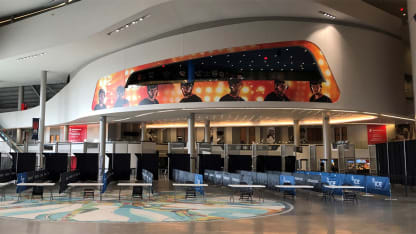
Daly said the fact that the NHL has had two positive tests among more than 800 players since training camps opened July 13 is a sign of good things to come.
"I can tell you that so far this week we have not had a confirmed positive," Daly said. "I think it's a credit to the seriousness with which are players are taking the precautions that are necessary."
Mayer explained what daily life in the hub will be like and laid out the game presentation ideas the NHL has, including how it will look on television.
The NHL is using three hotels in Edmonton within walking distance of Rogers Place to house all players, coaches and staff. The League is using two hotels in Toronto, one at Exhibition Place and the other near Scotiabank Arena.
There will be a fencing system running through each location to keep everyone inside the bubble secure and away from the general public. There will be 97 security guards and health ambassadors in Toronto and 125 in Edmonton.
Restaurants in the secure zones, some already in place and some the League is creating with the help of local chefs, will open early in the morning until late at night. Mayer said there will be a variety of food choices.
The League also created a concierge system by working with outside delivery companies to allow anyone in the bubble to get food, pharmaceutical needs and goods delivered from outside vendors.
The layout in each hub city includes designated space for indoor and outdoor activities, including movie theaters, player lounges, patio decks and recreational space. Players in Toronto will have use of BMO Field in Exhibition Place, home to Toronto FC of Major League Soccer.
Each hotel has team meeting rooms, meal rooms and fitness facilities. There will also be exclusive areas in the arenas for players to watch the other games.
Regarding game presentation, Mayer said it was important for the NHL to cater to the television audience because there will not be fans in either arena.
"Rather than taking advantage of virtual fans or cardboard cutouts or putting teddy bears in the stands, we've decided that we're going to do something that really caters to the fans at home, the fans that are enjoying the television experience," Mayer said. "We want to educate them. We want to entertain them. We want to visually excite them."
The League is using video, audio and lighting that will allow every game to look different from the previous game. There will be LED screens, monitors and stages around the ice to create the unique television-friendly look.
Mayer said the NHL has gotten goal songs, goal horns, in-arena music compilations and motivational videos from each of the 24 teams participating. The League also received specially produced videos from fans that will replicate some of the chants that go on in teams' home arenas.
In addition, Mayer said broadcast partners NBC in Toronto and Sportsnet in Edmonton will use 32 cameras per game, 12 more than normal, that will be repositioned in each building to bring the television audience visuals they haven't seen before.
The League has partnered with EA Sports to use its library of in-game sounds to mimic some crowd noise.
Mayer said the same game presentation will not be used during the 12 exhibition games.
"On Aug. 1 is where we're really going to make opening night a night to remember," Mayer said.
The NHL Hockey Operations Department had to create a level playing field for all 24 teams, especially to ensure the Toronto Maple Leafs and Edmonton Oilers would not benefit from playing in their home arenas. They will have no more access to the facilities at their arena or own practice rink than other teams.
"This is anything but normal, but we are trying to make it equitable for every team," said Colin Campbell, NHL senior executive vice president of hockey operations.
There will be six locker rooms used in Rogers Place, including the Oilers room, the visiting NHL room, the home room for the Edmonton Oil Kings of the Western Hockey League and the visiting WHL room. The NHL created two more locker rooms.
Scotiabank Arena will have four locker rooms, including the Maple Leafs room, the visiting NHL room and two pop-up rooms. On a day with three games in Toronto, the League will have to coordinate moving teams in and out during games because there are fewer rooms.
Teams will have one hour following a game to vacate the room so it can be cleaned and disinfected. A compliance officer will have to sign off on each room before another team can move in.
For practices in Edmonton, the NHL is using Rogers Place and Terwillegar Arena, which has four rinks and is a 25-minute drive from downtown. All practices in Toronto will take place at Ford Performance Centre, the Maple Leafs training facility that has four rinks.
Each market will also have a minimum of 15 workout facilities. The NHL has gotten more than 1,000 cases of Gatorade, 1,000 practice pucks and 12,000 shower towels for each hub city for the Qualifiers.
"The idea was to have everything in place so when the teams did get here they were focusing on mainly what they're here for," said Kris King, NHL senior vice president of hockey operations. "That's winning hockey games, competing for the Stanley Cup."
